What is Climate Change
Climate change or more specifically ‘human-induced climate change’ (also known as global warming) is the change in the Earth’s climate caused by human activities, primarily related to the increase in the gases carbon dioxide and methane in our atmosphere due to our burning of fossil fuels, the destruction of forests and our large amounts of intensively-farmed livestock.
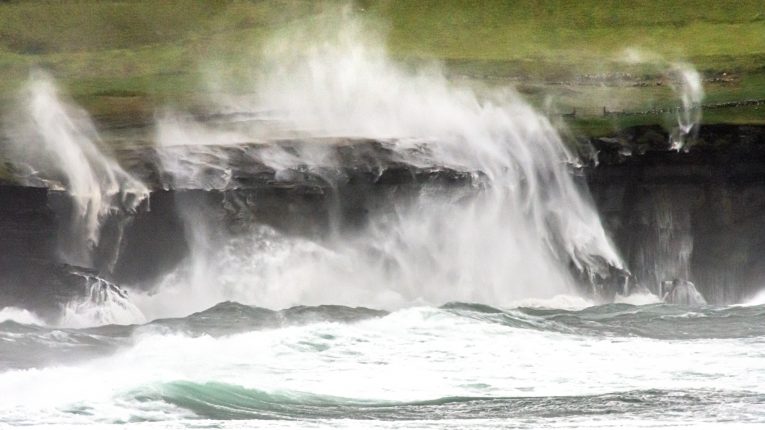
The Effects of Climate Change
- Rising atmospheric temperatures.
- Melting of ice sheets and glaciers.
- Rising sea-level and coastal flooding.
- Ocean acidification and loss of marine life.
- Increased strength of storms, monsoons and hurricanes.
- More flooding in some areas.
- More drought in some areas.
- Changes in oceanic currents.
- Decrease in biodiversity.
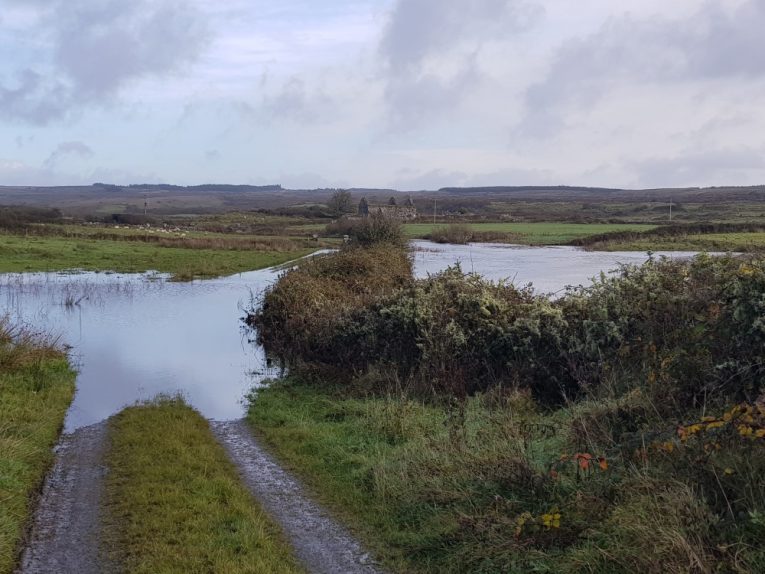
What we’re doing to help
The Burren and Cliffs of Moher UNESCO Global Geopark works alongside national and local authority strategies in developing several active climate mitigation and adaptation strategies. Additionally, we have numerous projects that we are working on within the Geopark which assist in measuring and improving local sustainability and conservation in the region. Examples of such projects include
The Code of Practice for Sustainable Tourism
We introduced a Code of Practice in Sustainable Tourism, which has been adopted by more than 65 businesses around the Burren and Cliffs of Moher. Every two years, businesses who sign up to the code submit a detailed report of various aspects of their day to day activities, They lay out an action plan with evidence of how they are acting on improving their impact on the environment and the local community. Measurements in this report include such metrics as, waste, gas, mileage, waste water, recycling and visitor numbers, to name a few. Having a record of these details allows our new carbon footprint calculator to measure the carbon footprint of each businesses. It also gives a clear indication about areas that need improvement.
Geofood
We are working with local tourism businesses to source carbon offset projects with direct benefits to local habitats and communities and has joined the GEOfood project to help reduce the carbon footprint of the food industry in the region.

The Fanore Dunes Project
We have been running an ongoing dune protection and monitoring project at Fanore Beach Geosite for over a decade which has stabilized the dunes and given them extra protection to survive longer in future conditions.
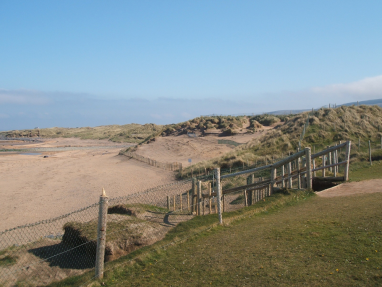
Fanore Dunes in 2007
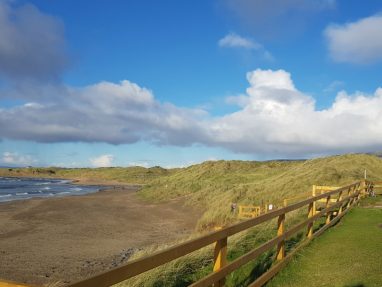
Fanore Dunes in 2021
Groundwater and River Catchment Awareness
We have been managing a groundwater and river catchment awareness through citizen science which involves locals collecting rainfall and river level data and entering that data onto a live online database which you can find here.
Collaborative groundwater data logging project
We have a collaborative groundwater data logging project with the Earth and Ocean Sciences Department at National University of Ireland, Galway and the Geological Survey of Ireland. This project will help predict the extent of local flooding events based on predicted increase in rainfall. This data will inform the Local Authority and Regional Development and Climate Action Plans.
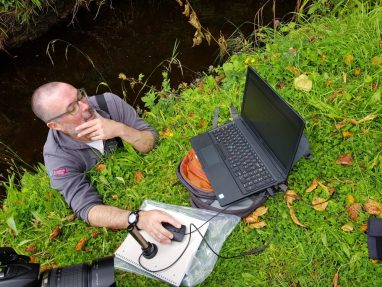
There are various other projects and initiatives that we are working on to improve sustainability and conservation in the Geopark. Follow us on Facebook and Twitter to stay up to date on our activity.
Evidence of early human influence on the Burren landscape
The effects of humans on the Earth’s atmosphere are really only evident since the industrial revolution which saw the large-scale burning of coal, followed by the use of oil and gas in the 20th century. However, there is good evidence from 4,000 years ago that the early inhabitants of the Burren were changing the landscape by clearing woods for cattle grazing. We find charcoal and decreases in the amount of tree pollen and increases in the amount of grass pollen from lake deposits at this time. Other evidence indicates soil loss due to erosion. However, because human populations numbers were low at that time the effect on the global atmosphere would have been very minor. That impact has changed as human population numbers have increased dramatically since then.
For thousands of years, Burren farmers have marked the end of summer by herding their cattle onto winterage pastures in the limestone uplands where they spend the winter grazing.
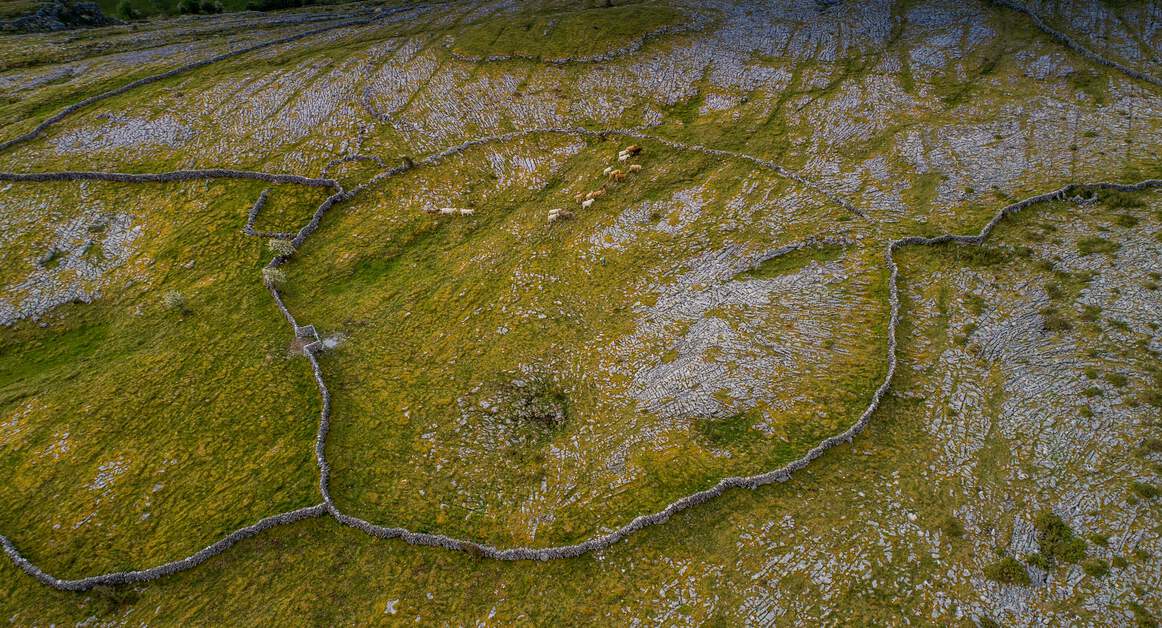
Evidence of past climate change in the landscape of the Burren
The last Ice Age
Just 22,000 years ago the Burren was covered in thick ice sheets which lasted for thousands of years.
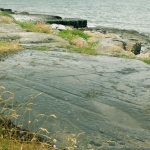
Glacial striations are the scratch marks formed from rocks trapped in thick sheets of ice being dragged over bedrock. The orientation of these scratch marks shows us the direction travelled by the ice.
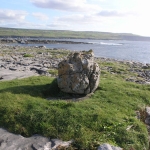
Glacial erratics are boulders that have been picked up and carried by ice and then dropped and left behind after the ice has melted.
Evidence of past climate change in the rocks of the Burren
The rocks in the Burren were formed over 300 million years before the first humans evolved on Earth, so any climate change recorded in the rocks here cannot be attributed to human activities. However, what they do show is that the Earth is highly dynamic and will respond to changes, whatever the cause. This does not mean that we can dismiss the impact of human influence on modern climate change, instead it means that the 7 billion humans on Earth now are a hugely significant new and additional influence on climate change.
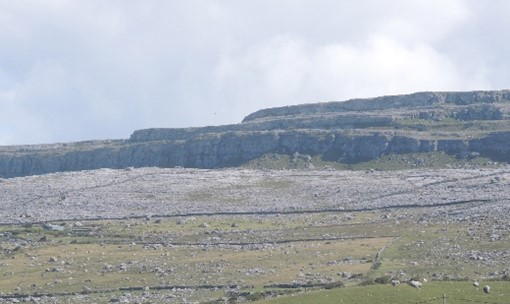
The stepped terraces in the Burren limestone have thin shale layers at the base of each terrace that mark sea-level fluctuations due to a different ice age from 330 million years ago.